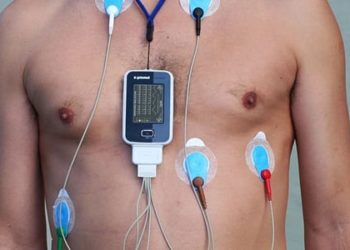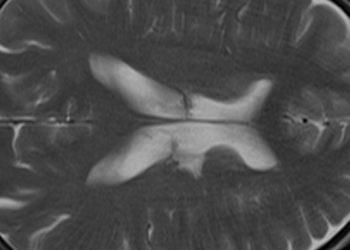Thrombectomy improves functional outcomes for imaging screened patients 6 to 16 hours after stroke: The DEFUSE 3 trial
1. Patients presenting with ischemic stroke 6 to 16 hours after they were last known to be well had improved functional outcomes at 90 days if treated with thrombectomy and medical therapy compared to medical therapy alone.
2. Mortality at 90 days trended towards a lower rate in the thrombectomy group compared to the medical therapy group.
Evidence Rating Level: 1 (Excellent)
Study Rundown: Patients presenting with ischemic stroke within 6 hours are preferentially treated with endovascular thrombectomy, and recent reports suggest thrombectomy may be beneficial after 6 hours from a patient’s last known well time. Additionally, imaging studies can identify patients with ischemic but not infarcted tissue who may benefit from thrombectomy. The DEFUSE 3 (Endovascular Therapy Following Imaging Evaluation for Ischemic Stroke) trial evaluates whether thrombectomy can benefit patients with ischemic stroke from 6 to 16 hours after their last known well time. The trial was stopped early as the primary outcome of a functional disability score at 90 days was significantly better in patients treated with thrombectomy and standard medical care versus medical care alone. The mortality rate trended towards a lower rate in the thrombectomy group, and no differences in intracranial hemorrhage or other adverse events were observed between the two groups.
The study’s strengths include participation numerous medical centers and rigorous imaging inclusion criteria, and a limitation is potentially less power for showing a mortality benefit with thrombectomy due to the early study termination.
Click to read the study in NEJM
Relevant Reading: Thrombectomy 6 to 24 hours after stroke with a mismatch between deficit and infarct
In-Depth [randomized controlled trial]: This multi-institutional, randomized, controlled trial was conducted between 2016 and 2017. Patients (n = 182) were eligible for inclusion if they were last known well between 6 to 16 hours prior to potential thrombectomy and met multiple imaging criteria such as an ischemic volume of less than 70 mL and had a potentially reversible ischemia volume of 15 mL or more. Imaging was done via CT or MRI utilizing a standard postprocessing software (RAPID). Patients were randomized to receive standard medical care (n = 90) or thrombectomy plus medical care (n = 92), with thrombectomy being performed per the discretion of the operating physician. Follow-up clinical assessment using the modified Rankin scale was performed at 30 and 90 days, with comparison of the groups Rankin score at 90 days being the primary outcome and comparision of functional independence being the secondary outcome.
The trial was halted early, with results indicating better Rankin disability scores in the thrombectomy group compared to the medical therapy group (unadjusted common odds ratio, 2.77; 95% confidence interval [CI], 1.63 to 4.70; p < 0.001). Patients were functionally independent at a higher rate in the thrombectomy group compared to the medical therapy group (45% vs 17%, respectively; risk ratio, 2.67; 95% CI, 1.60 to 4.48; p < 0.001). Mortality was 14% and 26% in the thrombectomy and medical therapy groups, respectively, at 90 days (p = 0.05). Rates of symptomatic intracranial hemorrhage and early neurologic deterioration did not significantly differ between the groups.
Image: CC/Wiki
©2018 2 Minute Medicine, Inc. All rights reserved. No works may be reproduced without expressed written consent from 2 Minute Medicine, Inc. Inquire about licensing here. No article should be construed as medical advice and is not intended as such by the authors or by 2 Minute Medicine, Inc.







